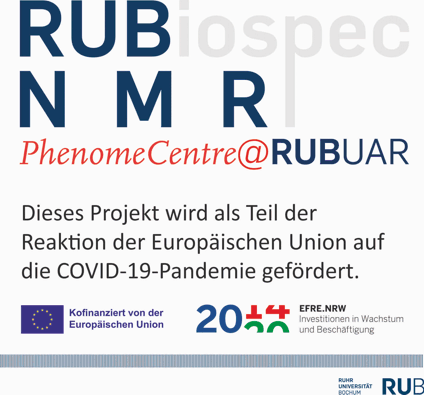Faculty of Chemistry
and Biochemistry
Biochemistry II
Biomolecular NMR Spectroscopy
Prof. Dr. Raphael Stoll
Building NC 5/171
Universitätsstraße 150
D-44780 Bochum
Tel.: +49 234 32-25466
Fax: +49 234 32-05466
E-Mail: bionmr@rub.de




Press
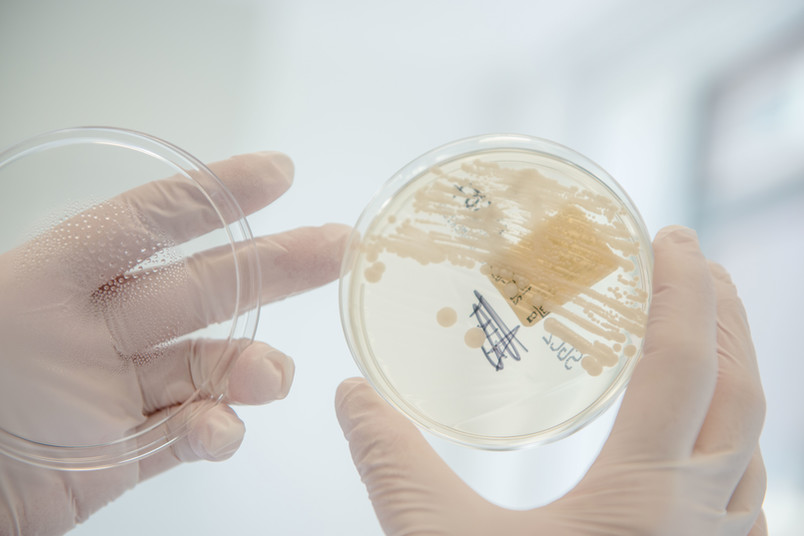 Twenty years ago, a drug candidate was rejected due to its side effects. Researchers have now figured out how to potentially make a successor molecule more selective. An increasing number of bacteria have become resistant to many commonly used antibiotics. Researchers from Bochum have discovered a fresh opportunity for a potential active molecule whose predecessor was rejected: By studying its interaction with the bacterial target protein very precisely in three dimensions, they identified a previously undetected point of attack that could be targeted by this compound. “As this point of attack only occurs in bacterial proteins, the drug would become much more selective and its harmfulness to human cells would be reduced,” explains Professor Raphael Stoll, head of the Biomolecular NMR Spectroscopy research group at the Faculty of Chemistry and Biochemistry at Ruhr University Bochum, Germany. The researchers published their findings on April 4, 2024 in the Journal of Medicinal Chemistry.
Twenty years ago, a drug candidate was rejected due to its side effects. Researchers have now figured out how to potentially make a successor molecule more selective. An increasing number of bacteria have become resistant to many commonly used antibiotics. Researchers from Bochum have discovered a fresh opportunity for a potential active molecule whose predecessor was rejected: By studying its interaction with the bacterial target protein very precisely in three dimensions, they identified a previously undetected point of attack that could be targeted by this compound. “As this point of attack only occurs in bacterial proteins, the drug would become much more selective and its harmfulness to human cells would be reduced,” explains Professor Raphael Stoll, head of the Biomolecular NMR Spectroscopy research group at the Faculty of Chemistry and Biochemistry at Ruhr University Bochum, Germany. The researchers published their findings on April 4, 2024 in the Journal of Medicinal Chemistry.
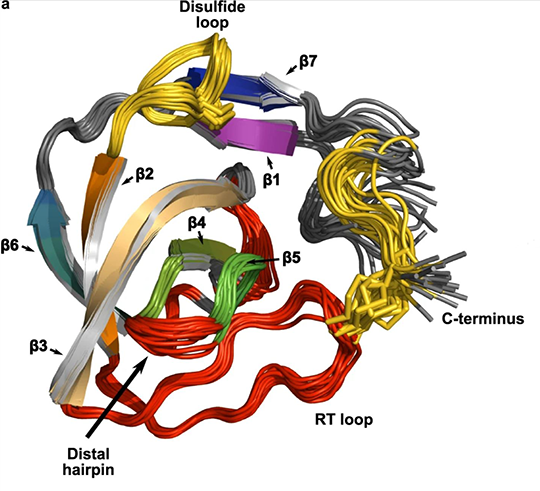 Discovery of the MOTH domain offers insights into evolution. This is because both insects and vertebrates need collagen in their connective tissue.
Collagen is the protein that holds our body together. It is produced inside cells, from where it must be transported to its site of action in connective tissue. The protein domain that is responsible for the recognition of collagen has previously been mistaken for a subform of another. Dr. Oliver Arnolds and Professor Raphael Stoll from the Faculty of Chemistry and Biochemistry at Ruhr University Bochum, Germany, have characterised and named this domain for the first time. They reported on the so-called MOTH domain of the TANGO1 protein family in the journal Nature Communications on 20 April 2023.
Discovery of the MOTH domain offers insights into evolution. This is because both insects and vertebrates need collagen in their connective tissue.
Collagen is the protein that holds our body together. It is produced inside cells, from where it must be transported to its site of action in connective tissue. The protein domain that is responsible for the recognition of collagen has previously been mistaken for a subform of another. Dr. Oliver Arnolds and Professor Raphael Stoll from the Faculty of Chemistry and Biochemistry at Ruhr University Bochum, Germany, have characterised and named this domain for the first time. They reported on the so-called MOTH domain of the TANGO1 protein family in the journal Nature Communications on 20 April 2023.
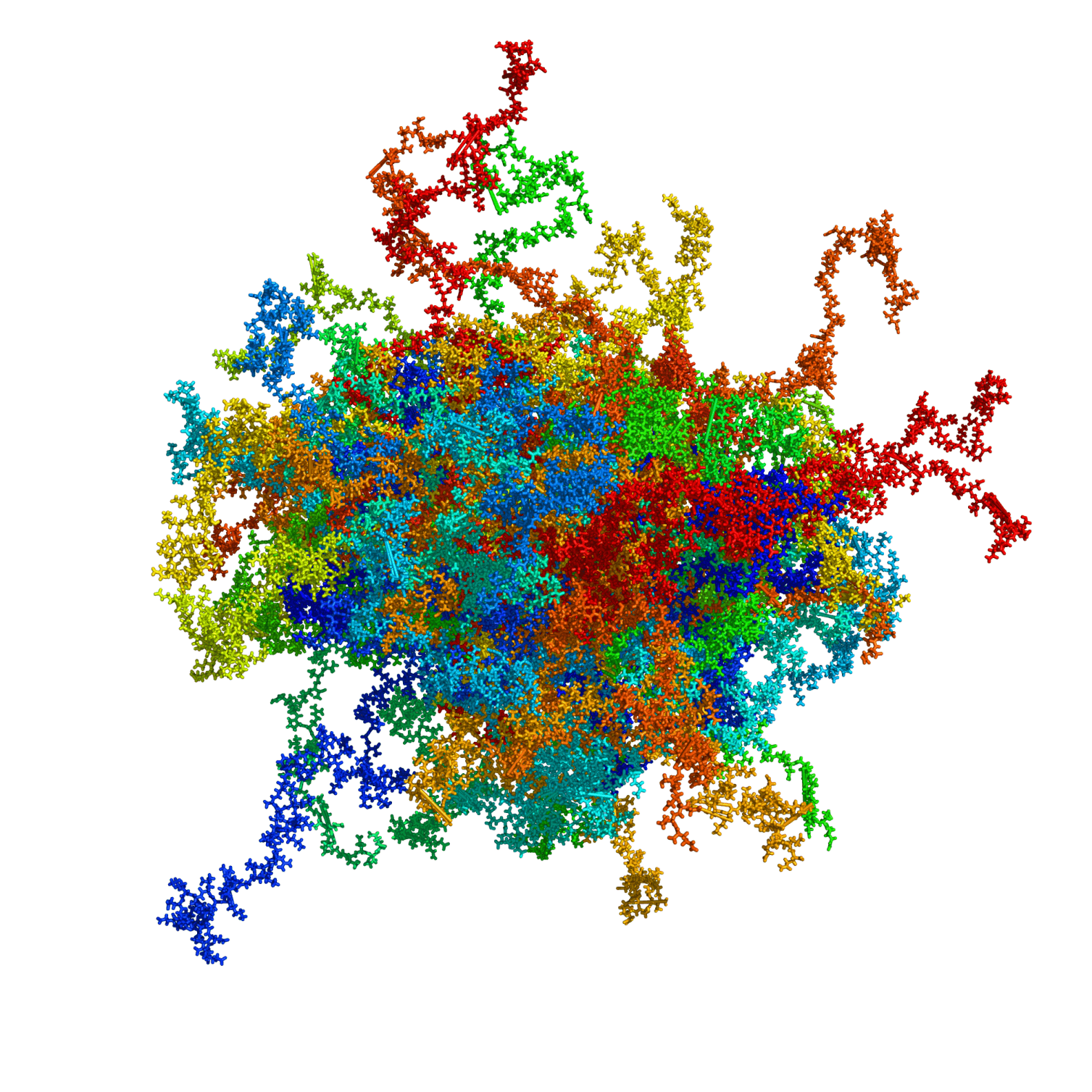 While the correct function of many proteins depends on their three-dimensional structure, some appear to adopt random forms. For one of them, a team of researchers at Ruhr-Universität Bochum (RUB) has shown that the supposed disorder is not disorder after all: the protein HMGA1a adopts dynamic, more compact structures that depend on its phosphorylation. A malfunction of HMGA1a can lead to cancer. The researchers led by Profesoor Raphael Stoll therefore expect their results to form a basis for future therapeutic strategies to combat cancers caused by HMGA1a. They report in the journal Nucleic Acids Research on July, 24 2019.
While the correct function of many proteins depends on their three-dimensional structure, some appear to adopt random forms. For one of them, a team of researchers at Ruhr-Universität Bochum (RUB) has shown that the supposed disorder is not disorder after all: the protein HMGA1a adopts dynamic, more compact structures that depend on its phosphorylation. A malfunction of HMGA1a can lead to cancer. The researchers led by Profesoor Raphael Stoll therefore expect their results to form a basis for future therapeutic strategies to combat cancers caused by HMGA1a. They report in the journal Nucleic Acids Research on July, 24 2019.
Many – but not all – proteins in a living cell have a defined three-dimensional structure, which is absolutely necessary for their correct activity. The interrelationship between the structure and function of proteins is the focus of many research initiatives that extend to the development of innovative drugs.
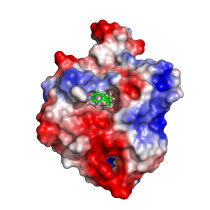 Function and regeneration of switch proteins impaired
Bochum and Wuppertal-based researchers study effects on enzymes
Bisphenol A impairs the function of proteins that are vital for growth processes in cells. This finding has been reported by researchers from the Ruhr-Universität Bochum and the University of Wuppertal. The substance, short BPA, is contained in many plastic products and is suspected of being hazardous to health. To date, it had been assumed that bisphenol A produces a harmful effect by binding to hormone receptors. The chemist and biochemist team has discovered that the substance also affects the so-called small GTPases. They published their findings in the “Journal of Medicinal Chemistry”.
Function and regeneration of switch proteins impaired
Bochum and Wuppertal-based researchers study effects on enzymes
Bisphenol A impairs the function of proteins that are vital for growth processes in cells. This finding has been reported by researchers from the Ruhr-Universität Bochum and the University of Wuppertal. The substance, short BPA, is contained in many plastic products and is suspected of being hazardous to health. To date, it had been assumed that bisphenol A produces a harmful effect by binding to hormone receptors. The chemist and biochemist team has discovered that the substance also affects the so-called small GTPases. They published their findings in the “Journal of Medicinal Chemistry”.
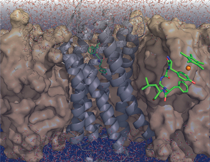 RUB researchers decode the interplay between enkephalins and pain receptors
Metal complex arrests elusive messenger
“Pain begone!” In order to send out this signal, the human body produces tiny messenger molecules that dock to certain receptors. Using traditional biochemical methods, this interaction between the messengers, so-called enkephalins, and opioid receptors is very difficult to study. An interdisciplinary team of biochemists and inorganic chemists at the Ruhr-Universität Bochum (RUB) has now succeeded in identifying the structure of an enkephalin in solution and to track its interaction with the opioid receptor in detail. The analysis provides a new, precise starting point for the development of drugs meant to combat specific types of pain. This discovery is featured in the cover story of the “Dalton Transactions” journal.
RUB researchers decode the interplay between enkephalins and pain receptors
Metal complex arrests elusive messenger
“Pain begone!” In order to send out this signal, the human body produces tiny messenger molecules that dock to certain receptors. Using traditional biochemical methods, this interaction between the messengers, so-called enkephalins, and opioid receptors is very difficult to study. An interdisciplinary team of biochemists and inorganic chemists at the Ruhr-Universität Bochum (RUB) has now succeeded in identifying the structure of an enkephalin in solution and to track its interaction with the opioid receptor in detail. The analysis provides a new, precise starting point for the development of drugs meant to combat specific types of pain. This discovery is featured in the cover story of the “Dalton Transactions” journal.
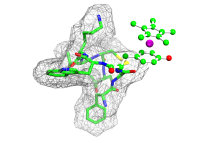 Researchers at the RUB and from Berkeley have used metal complexes to modify peptide hormones. In the Journal of the American Chemical Society, they report for the first time on the three-dimensional structure of the resulting metal-peptide compounds. “With this work, we have laid the molecular foundation for the development of better medicines” says Prof. Raphael Stoll from the Faculty of Chemistry and Biochemistry at the Ruhr-University. The team examined hormones that influence the sensation of pain and tumour growth.
Researchers at the RUB and from Berkeley have used metal complexes to modify peptide hormones. In the Journal of the American Chemical Society, they report for the first time on the three-dimensional structure of the resulting metal-peptide compounds. “With this work, we have laid the molecular foundation for the development of better medicines” says Prof. Raphael Stoll from the Faculty of Chemistry and Biochemistry at the Ruhr-University. The team examined hormones that influence the sensation of pain and tumour growth.
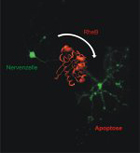 Das Signalprotein Rheb kommt in vielen Körperzellen, besonders im Gehirn vor. Es ist wichtig für Wachstumsprozesse – bei Zellstress zeigt es aber sein zweites Gesicht. In diesem Fall beschleunigt es den Tod der Zelle. Diese Erkenntnis haben Forscher um Prof. Dr. Rolf Heumann und Prof. Dr. Raphael Stoll von der Ruhr-Universität Bochum gewonnen.
Sie hat Auswirkungen auf die Behandlung von Erkrankungen: Das verbreitet eingesetzte Antibiotikum Rapamycin, das die Signalweiterleitung von Rheb verhindert, sollte mit Bedacht eingesetzt werden, raten die Forscher. Unter Zellstressbedingungen könnte sich seine Wirkung umkehren. Die Forscher berichten im Journal of Biological Chemistry.
Das Signalprotein Rheb kommt in vielen Körperzellen, besonders im Gehirn vor. Es ist wichtig für Wachstumsprozesse – bei Zellstress zeigt es aber sein zweites Gesicht. In diesem Fall beschleunigt es den Tod der Zelle. Diese Erkenntnis haben Forscher um Prof. Dr. Rolf Heumann und Prof. Dr. Raphael Stoll von der Ruhr-Universität Bochum gewonnen.
Sie hat Auswirkungen auf die Behandlung von Erkrankungen: Das verbreitet eingesetzte Antibiotikum Rapamycin, das die Signalweiterleitung von Rheb verhindert, sollte mit Bedacht eingesetzt werden, raten die Forscher. Unter Zellstressbedingungen könnte sich seine Wirkung umkehren. Die Forscher berichten im Journal of Biological Chemistry.
 21.03.2007 - Ein Netzwerk für Biomolekulare Kernspintomographie (NMR) wurde mit Beteiligung des Forschungszentrums Jülich in Düsseldorf gegründet. Jülich verfügt neben seiner wissenschaftlichen Expertise über ein NMR-Zentrum mit drei leistungsstarken Spektrometern.
Das NRW-Netzwerk bio-N3MR wurde als eine Kooperation des Forschungszentrums Jülich, der Heinrich-Heine-Universität Düsseldorf, der Ruhr-Universität Bochum, der Universität Duisburg-Essen sowie dem Max-Planck-Institut für molekulare Physiologie in Dortmund im Bereich der NMR-basierten strukturbiologischen Forschung gegründet.
21.03.2007 - Ein Netzwerk für Biomolekulare Kernspintomographie (NMR) wurde mit Beteiligung des Forschungszentrums Jülich in Düsseldorf gegründet. Jülich verfügt neben seiner wissenschaftlichen Expertise über ein NMR-Zentrum mit drei leistungsstarken Spektrometern.
Das NRW-Netzwerk bio-N3MR wurde als eine Kooperation des Forschungszentrums Jülich, der Heinrich-Heine-Universität Düsseldorf, der Ruhr-Universität Bochum, der Universität Duisburg-Essen sowie dem Max-Planck-Institut für molekulare Physiologie in Dortmund im Bereich der NMR-basierten strukturbiologischen Forschung gegründet.
 An ihrem genetischen Fingerabdruck sind sie nicht zu unterscheiden und sehen doch grundverschieden aus – die Raupe und der sich aus ihr entwickelnde Schmetterling. Beide sind schon in den Genen angelegt, doch erst die Proteine sorgen für das richtige Erscheinungsbild zur rechten Zeit. Ihrem komplizierten Kommen und Gehen sind die Forscher nun mit High-Tech auf der Spur: Ein Protein zu finden, ist der erste Schritt; wie es funktioniert, verrät die Dynamik seiner dreidimensionalen Struktur.
An ihrem genetischen Fingerabdruck sind sie nicht zu unterscheiden und sehen doch grundverschieden aus – die Raupe und der sich aus ihr entwickelnde Schmetterling. Beide sind schon in den Genen angelegt, doch erst die Proteine sorgen für das richtige Erscheinungsbild zur rechten Zeit. Ihrem komplizierten Kommen und Gehen sind die Forscher nun mit High-Tech auf der Spur: Ein Protein zu finden, ist der erste Schritt; wie es funktioniert, verrät die Dynamik seiner dreidimensionalen Struktur.








